Birds with Stone Wings: Athanasius Kircher, 1678
ITEM: Original engraving from Athanaseus Kircher Mundus Subterreaneus....1678. 14x10". Very good condition. $150.
ref: JF Ptak Science Books Post 1347
The great semi-mystifying polymath Athanasius Kircher (1602-1680) lived for a long time and filled his life with ideas and words, producing dozens of books during his time on Earth, some of which were never published even though written, some manuscripts lost forever. His was a massive output of extraordinary breadth. He wasted little time what I can see, writing on a spectacular range of subjects, enlightening people, confusing people, generating great theories and some bad ideas.
The images below comes from his Mundus Subterraenus ("Athanasii Kircheri Mundus subterraneus in XII libros digestus... "), published in 1678, and which was concerned mainly with geology and the theory of the Earth. Kircher a product of the great Jesuit institution, the Collegio Romano, postulated the structure of the interior of the Earth, the origin of heat, the source of the tides, the composition of light, mechanics, the structure of music, linguistics, astronomy, and of course the existence of the Virgin Mary in amber. There was also a fair amount of work on one of his side interests that populated a number of his works, alchemy and the search for the organization of materials.
But what I am looking at today with Kircher is the Mary-in-Amber part, his investigations (and theorizing, and documentation) on naturally-appearing, organic objects found in inorganic material--rocks and minerals--like these birds:
Which is a detail from
The engraving, entitled Figure Volucrum, quas Natura in lapidibus depinxit, ex variis Museia decerpt et aliunde transmissa (or "Figures of winged creatures, painted by nature on stones, taken from various museums, and otherwise transmitted.") shows Kircher's collection of anthropomorphically based inorganic items. It is a remarkable exercise to try and place yourself within the context of the scientific world of Kircher's time, 350 years ago, and try to explain these naturally-occurring phenomena, without even the benefits of the conception of long geologic time, or of expanded time in general.
The descriptive text (at the bottom of the engraving) from Kircher on these objects is translated, as follows:
1. The first figure represents a head of a Stork, together with some, but I do not know what, quadruped. At the top is something like a human face. Extracted from Aldobrandinot (see PI. XXIII. Fig. 1).
2. Shows various forms and parts of animals, winged creatures as well as quadrupeds, although very imperfect, the cause of which we give in the physical examinations (see PI. XXIII. Fig. 2).
3. Represents the figures of two birds expressed by nature on marble in the church of St. George's, at Venice, referred to by Ambrosinua (see Vol. VII. PI. II. Figs. 3, 4).
4. Shows the head of an Owl, surrounded by rudiments of other birds (see PI. XXIV. Fig. 2).
5. Represents the figure of a Wagtail, or as others prefer, of a Peacock (PI. XXIV. Fig. 3).
6. Shows the figure of a monstrous bird (Vol. VII. PI. II. Fig. 4).
7. The figure of a Merle (Vol. VII. PI. II. Fig. 5).
The Gulf Stream in 1668, by Fr. Kircher
This is one of the earliesst depictions of what we know today as the Gulf Stream, and it appears one among many wonders in Fr. Athanasius Kircher's Mundus Subterraneus (1668). The map appears about a century before the first map to truly distinguish the Gulf Stream (the B. Franklin/Folger map of 1768-1785) and shows the remarkable activity that must have come with the acquisition of the data necessary to show on even this popular map. Given that teh data was necessarily spotty at this early period the Kircher effort was largely theoretical (and for what it was worth likened the currents to something similar to blood moving though the body, which at least used the work of William Harvey). (Eberhard Happel is on a similar wavelength as Kircher with the currents map, and published his map a few years later, though he was mainly a science popularizer who "relied" heavily upon the Kircher map and was nowhere near to being Kircher's intellectual rival, his map is still interesting given its very heavy lining and beauty.)
- Tabula Fluxus et Refluxus rationes in Mari Anglico...
- Owing to the size of the original folio the entire sheet does not fit on my scanner--the top 1.5" and the bottom 1" or so simply are not included in he scan, though the margins are present in real life.
- The map measures 7 3/4 x 7 3/4" on a 14 3/4 x 9" sheet, being folio 141/142. It is a deep, strong impression, and in Very Good condition. $550
This is a detail of the larger map (below) with a East-West orientation for bottom-to-top, making the northern North American coastline along the top of the map, with the European coast from Spain to Denmark, and then hopping over to the Nordic countries, and of course with England and Ireland, and lonely Iceland.
Found in Stone: Geometry and Alphabets
ITEM: original sheet from Athanasius Kircher's Mundus Subterranius, 1664. 14 x 10 inches. Fine condition. $175.00
ref: JF Ptak Science Books Post 1353
I wrote about Athanasius Kircher's Mundus Subterreaneus (1664) a few days ago (in "Birds With Stone Wings", hereand elsewhere), particularly staying within the first section of the eight book of Mundus, De Lapidibus, in which he investigated stones, gems, fossils and then "found figures" in agates.
Kircher did not belive that finding these symbols in stone were a direct consequences of any supreme anything, recognizing that they were formed and collected by chance. He did formulate some interesting and early and sometimes-correct observations on the evolution of languages, but was entirely constrained by the authentic history as presented in the early books of the Bible. While recognizing that languages of a certain region are or could be relational, and that the Romance languages were a corruption of Latin and that there was a Semitic and Graeco-Latin connection, they were all necessarily descendants of Hebrew, which was the language given by the creator to man, mystical symbols handed down from Heaven to Adam. And so it goes.
And in detail:
And then of course the stone-found geometrical figures:
Machina Anemica I AND II. These machines are respiratory/breathing agents for transferring wind to mines and (in the second case) for ventilation:
9 1/2 x 7 inches, 240x190mm. $175
Gallus...serpentina cauda conspicuus...In the chapter, "de Animalibus Subterraneis", p 97.
Image 6 1/2 x 5 inches, 160x120mm. $200 (There is some chipping at the top of the sheet, though it does not extend into the sub-head.)
(Underground animals) Draco Helveticus bipes et alatus.
Image 3 1/4 x 7 1/2", 80x185mm. $175
On the other side of the page: Hic Dracunuculus...
Image 4x6", 115x160mm.
Magnetismus Globorum Astralium, in the chapter "Opificium Globi Terreni..."
Image 7 x 7 1/2", 185x190mm. $225
"Organum Maritimum quo dato Rhombio & aetateLunae, aestus plenitudo, quovis in loco reperitar", a two-level volvelle supposing to show the workings of the movements of the oceans. It also appears in later editions not as a volvelle but in its constituent parts so that you could cut it out and make the volvelle yourself, saving on a time-intensive production cost.
And the image (quite a bit darker here than in the original, which is too bad, since I'm trying to sell the thing):
Image: 6x7 inches. In a nice frame, archivally mounted. $500


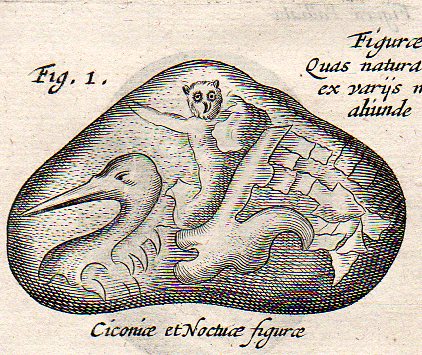
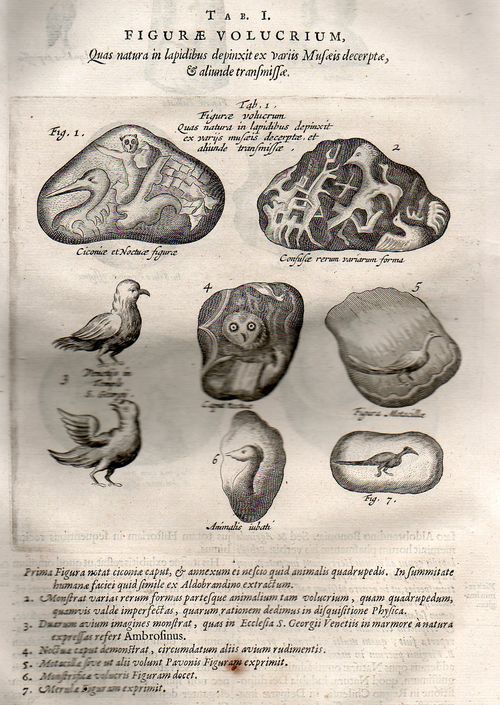
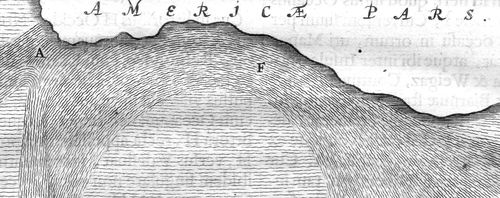
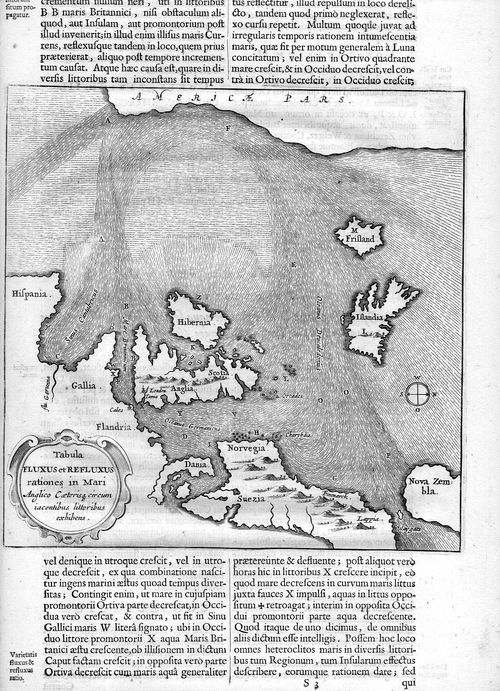
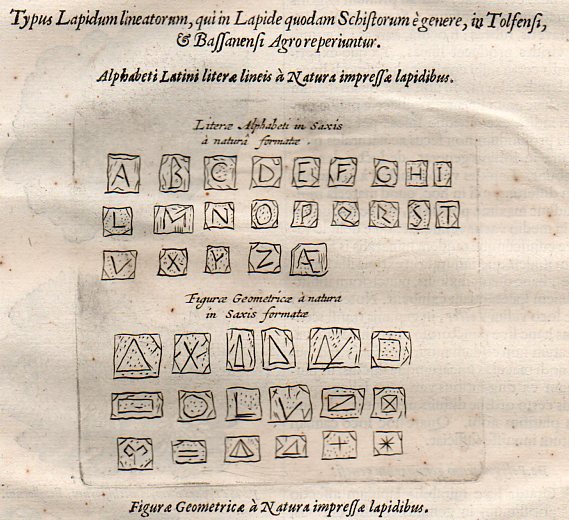
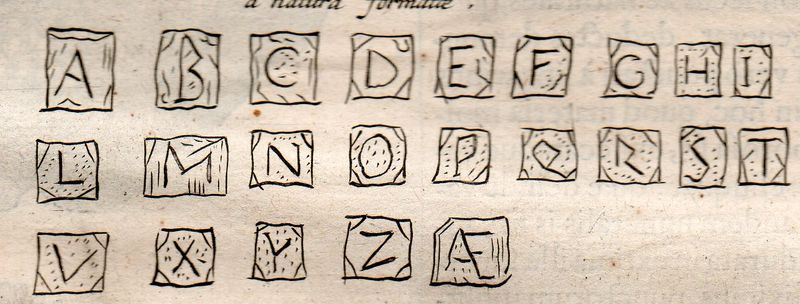
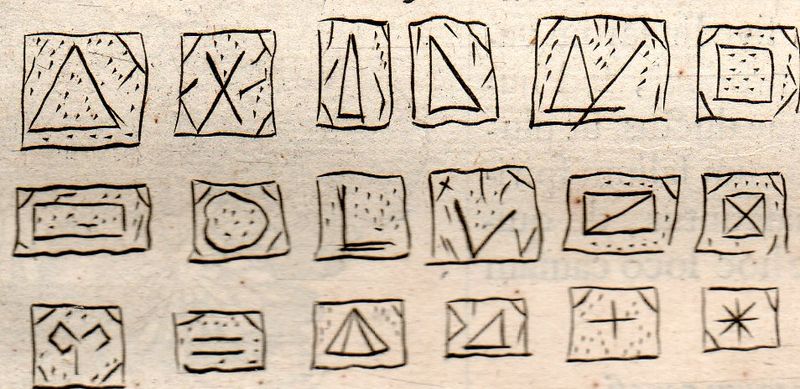
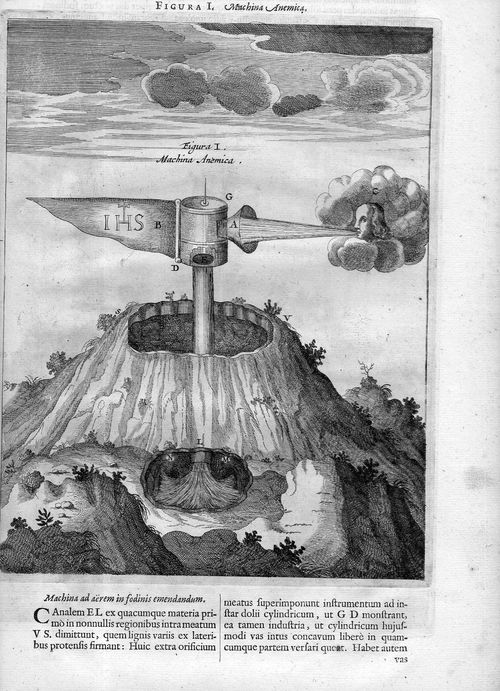
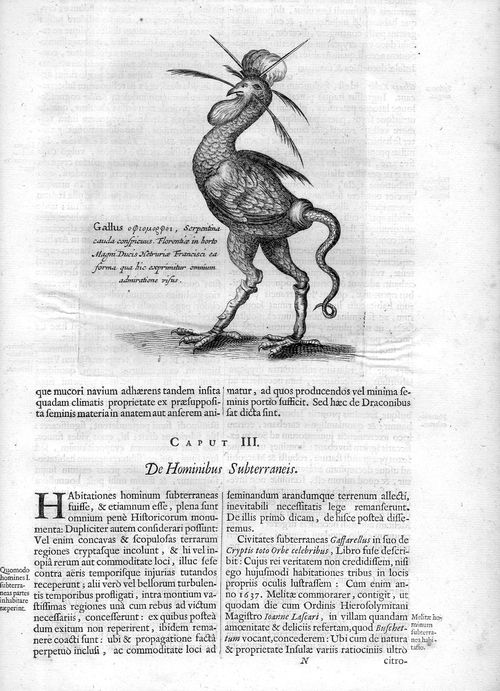
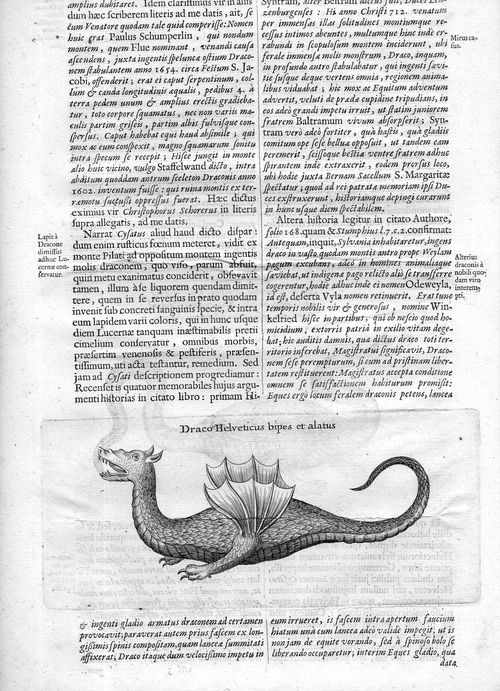
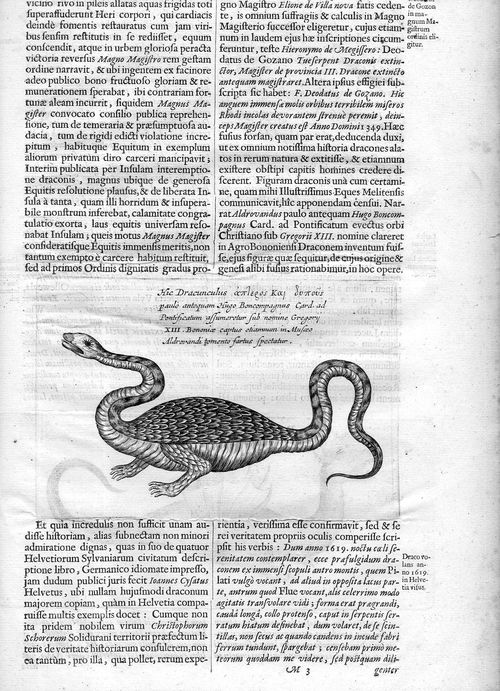
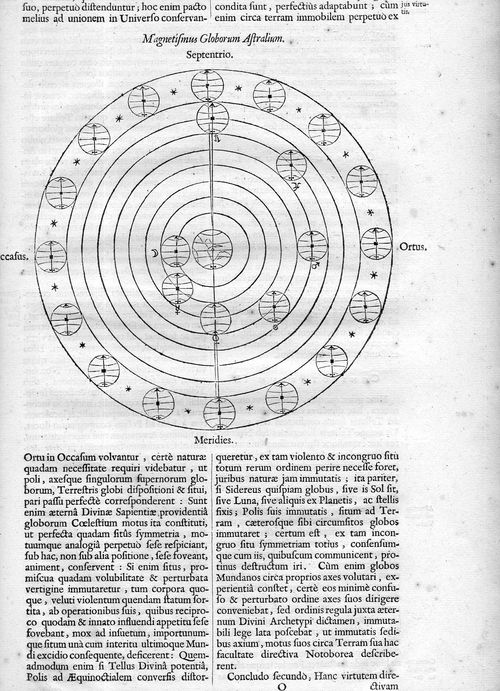
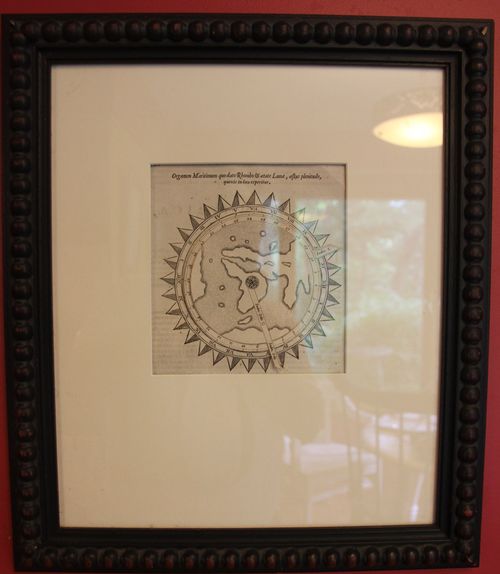
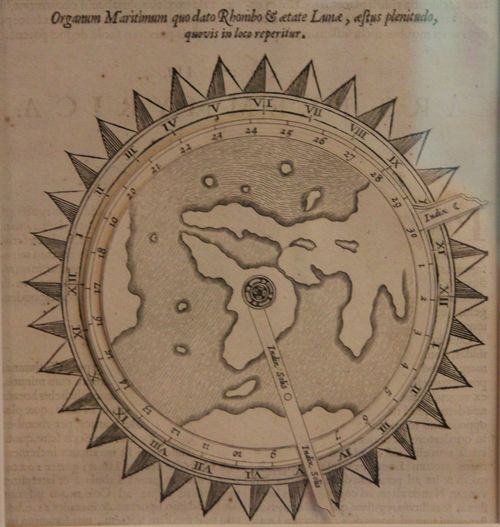


Comments